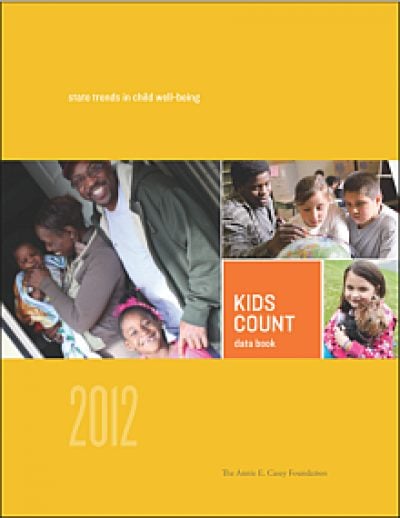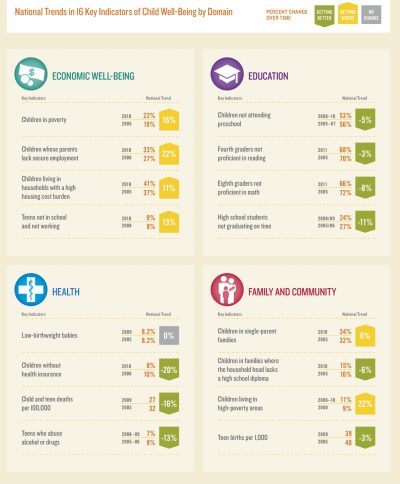Summary
The KIDS COUNT Data Book is an annual publication that assesses child well-being nationally and ranks the 50 states. To take advantage of the tremendous growth in research and data about child development, the 2012 report introduces a new, more comprehensive measure of child well-being -- a composite index derived from 16 key indicators grouped into four domains: (1) economic well-being, (2) education, (3) health and (4) family and community. The three highest ranked states for overall child-being in 2012 were New Hampshire, Massachusetts and Vermont; the three lowest ranked states were Nevada, New Mexico and Mississippi. At the national level, children experienced gains in education and health, showing continued incremental improvement in line with longer-term positive trends. But economic well-being declined: child poverty increased, more children had parents who lacked secure employment and more children lived in families that faced high housing cost burdens. Results for the family and community domain were mixed.
View national and state data profiles associated with the 2012 KIDS COUNT Data Book










